True to form, Ian Griffiths’ AW25 outing served an important purpose—to broaden the definition of fashion beyond faddish conceptualism.
COMPETENCE is an underrated virtue. Surely we all keep a mental list of references who just plug along quietly or promptly, demonstrating excellence on deadline. They come in handy, those plugs.
Count Ian Griffiths among the competent ones: as the chief designer of Max Mara, he fashions clothes that are well-made, well priced, and dependably appealing. He wastes zero effort trying to be a trend star and has built grand codes pretty much on his own and almost completely under the radar, which earned him kudos.
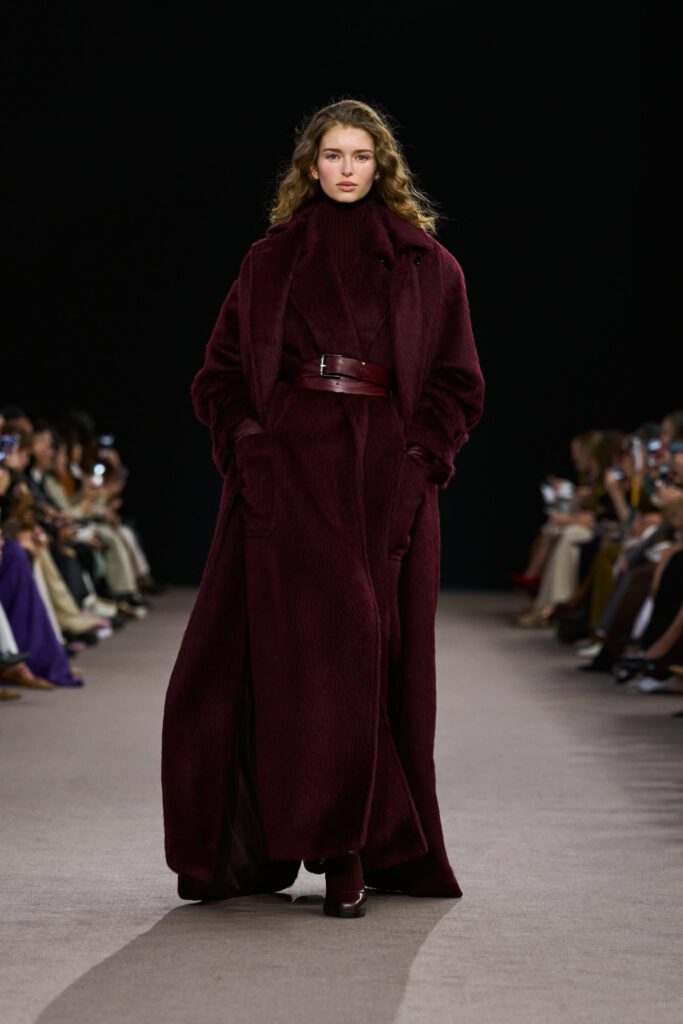
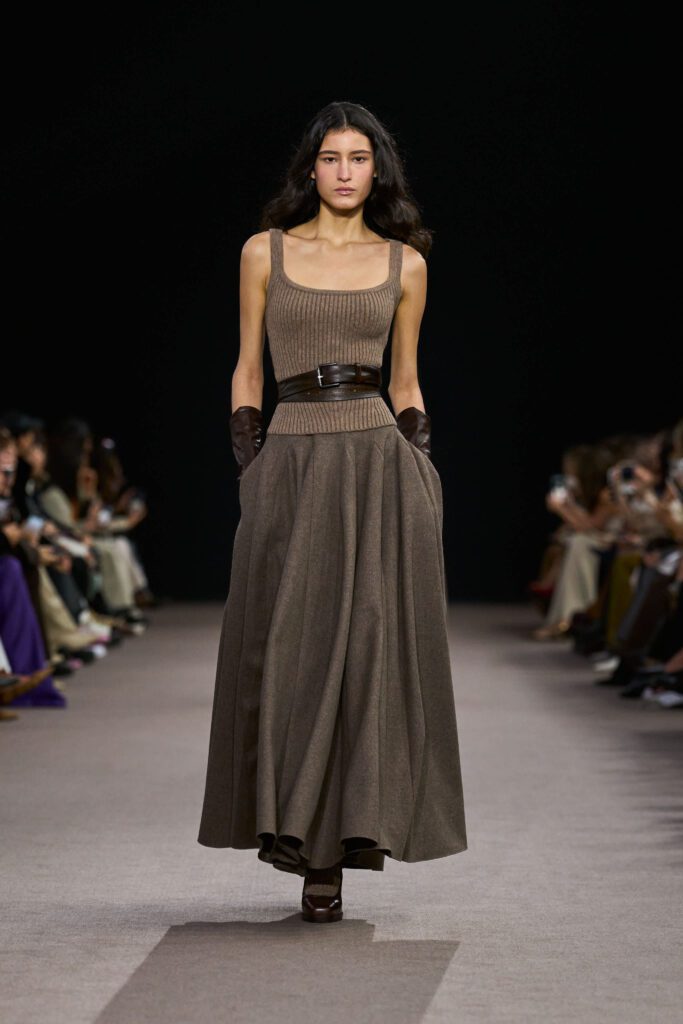
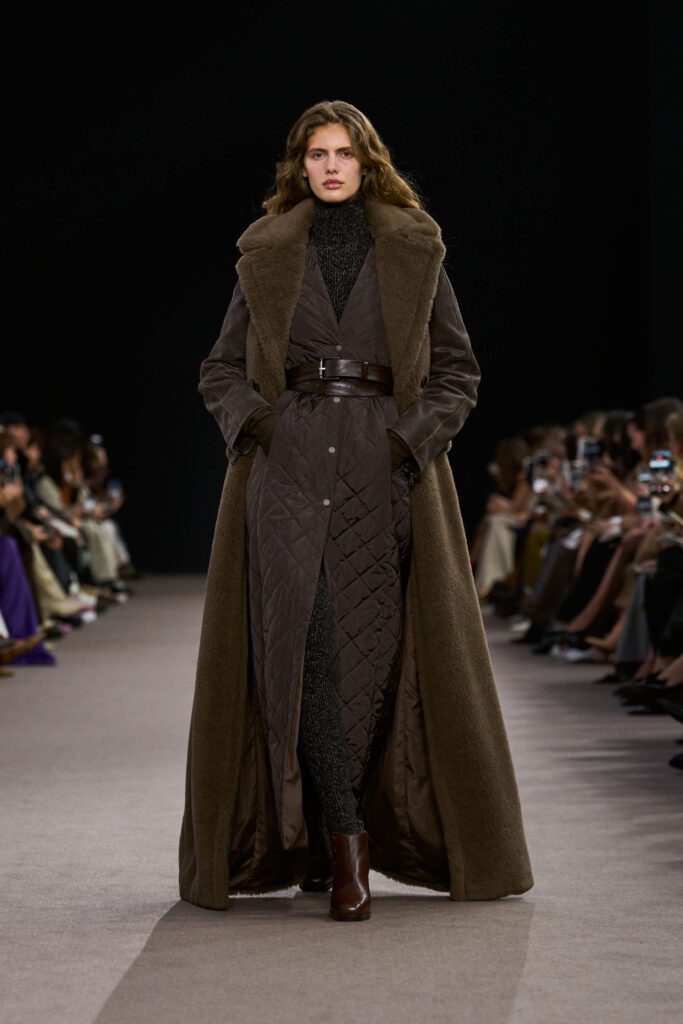
This season’s collection was a predictably solid affair, composed by heroines wearing largely by easy-to-wear offerings in a variety of textures, stretching from detachable quilted linings and sleeves done in leather or shearling. This season, there was a new emphasis on classicism with a touch of neo-gothic chic and distinctly urban rusticity, inspired by the Brontës novelists who imbued sleek, self-assured elegance in equal measure—a touchpoint which served to further elaborate Griffiths’ contemporary woman.
“Almost everything I do has to be glamorous,” offered Griffiths post-show. “I could make a collection about, I don’t know, a pork butcher, but she would have to be a glamorous one. And for me, it was all about Brontës novels this season, because I was prompted. I just woke up in the morning and thought: I want to do big skirts: what story can I attach to that?
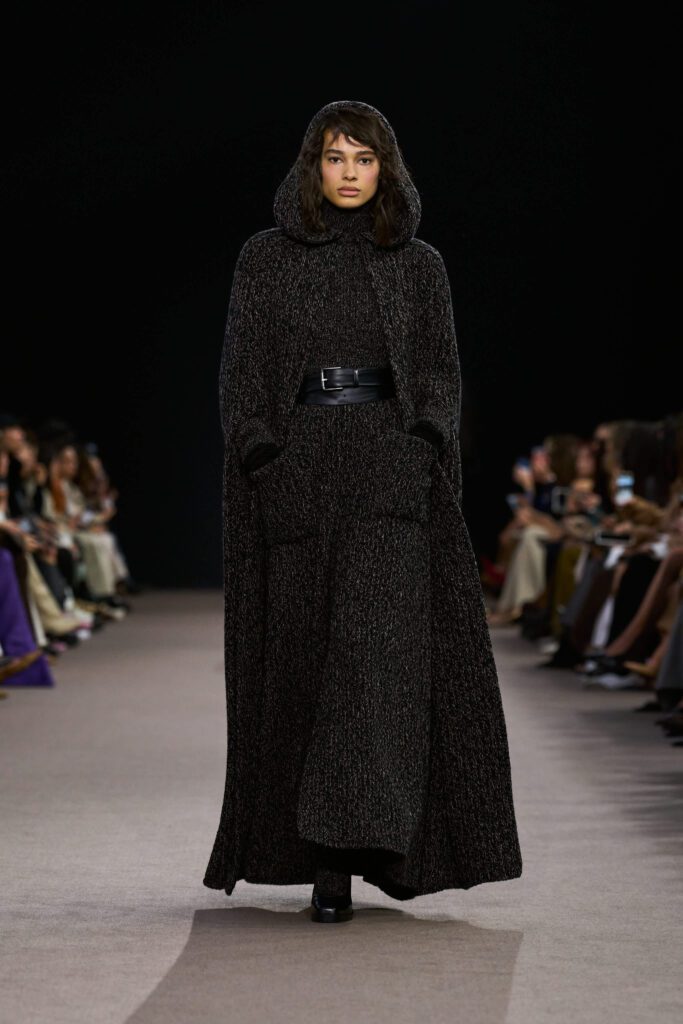

The mood in the Brontës was so right, and I think it’s a moment where this woman who’s been applying herself through cold logic to climbing the corporate ladder all these years has been denying herself this inner passion. And with the world as it is, she just has to find an expression for it: it becomes something she can no longer conceal.”
A few pieces stood out as really special: soft pleated ribs and cinched waistcoats, with a new shrunken proportion to wear under a jacket and as a country-style gilet to wear over a sharply cut coat. “It’s something you really would wear to march across the moors in Yorkshire or sleep under a gorse bush in,” says Griffiths. “Although, of course, you know, this woman is not likely to be doing that. She’s more likely to be creeping round or marching through the corridors of power.”
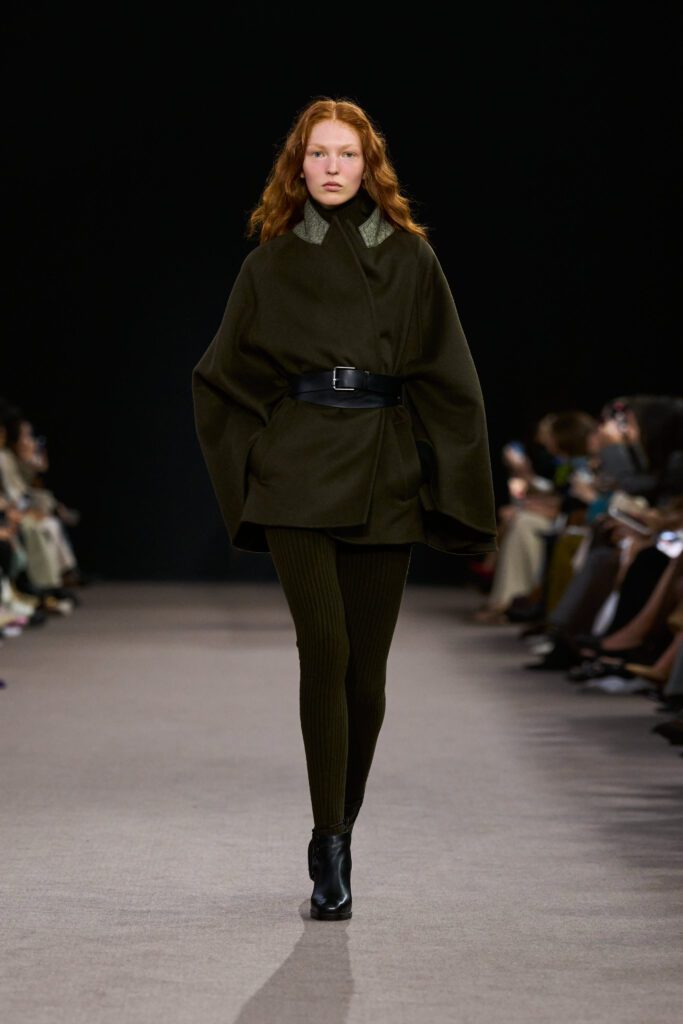
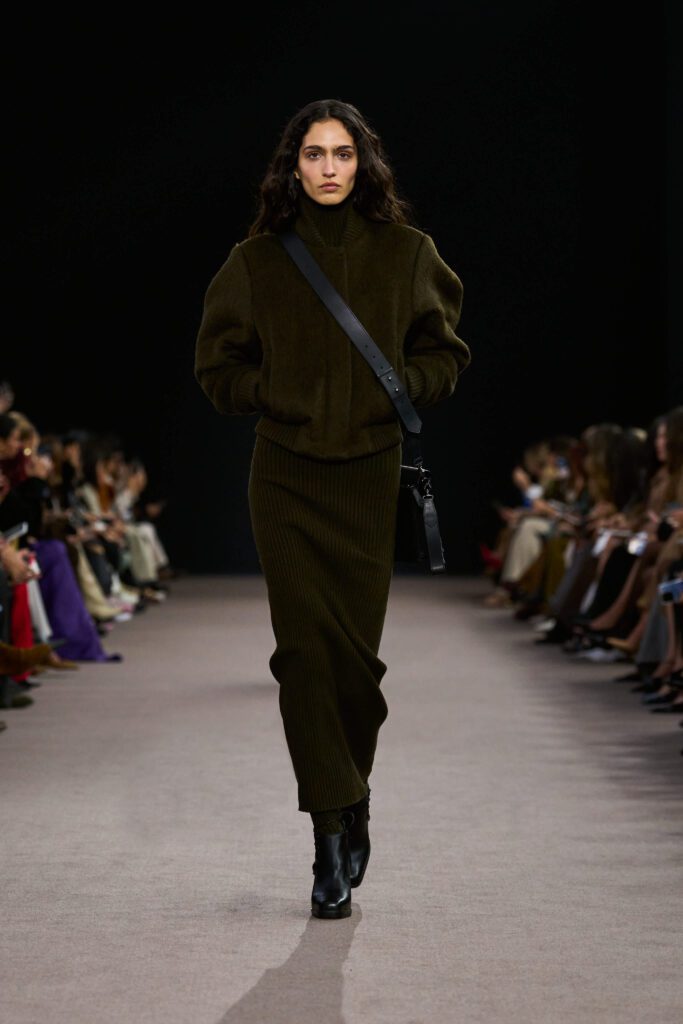
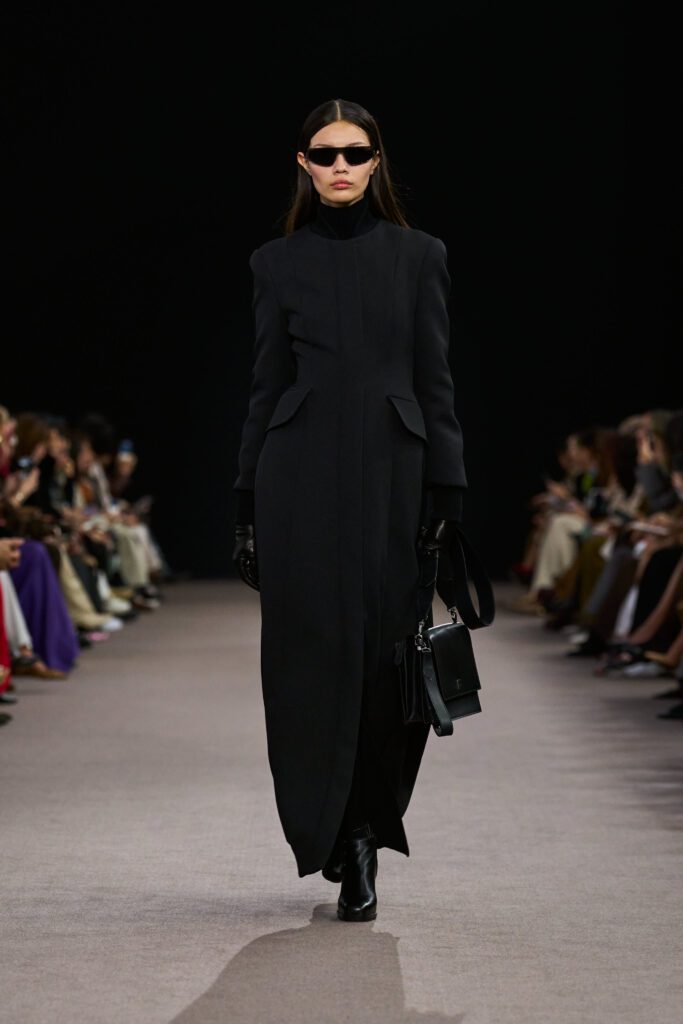
But it’s bringing that part of a dream with her. “It’s that feeling of bringing your dream with you that makes every day the things you have to do in the day feel bearable. I mean, I really do think that. Maybe because I’m particularly shallow, but if I’ve got a horrible day in the morning, at least I can wear my casher-coloured pinstripe suit with the waistcoat, even if I do have to, I don’t know, sack somebody and don’t want to or close down a factory or do any of the other horrible things that a person with power is sometimes obliged to do.”
Belts had a directional slickness to them. “What we see here is a double belt, or better put, a single belt that goes round twice, as if you’d found Heathcliff’s belt, and it just happens to fit round your waist twice,” he explains.

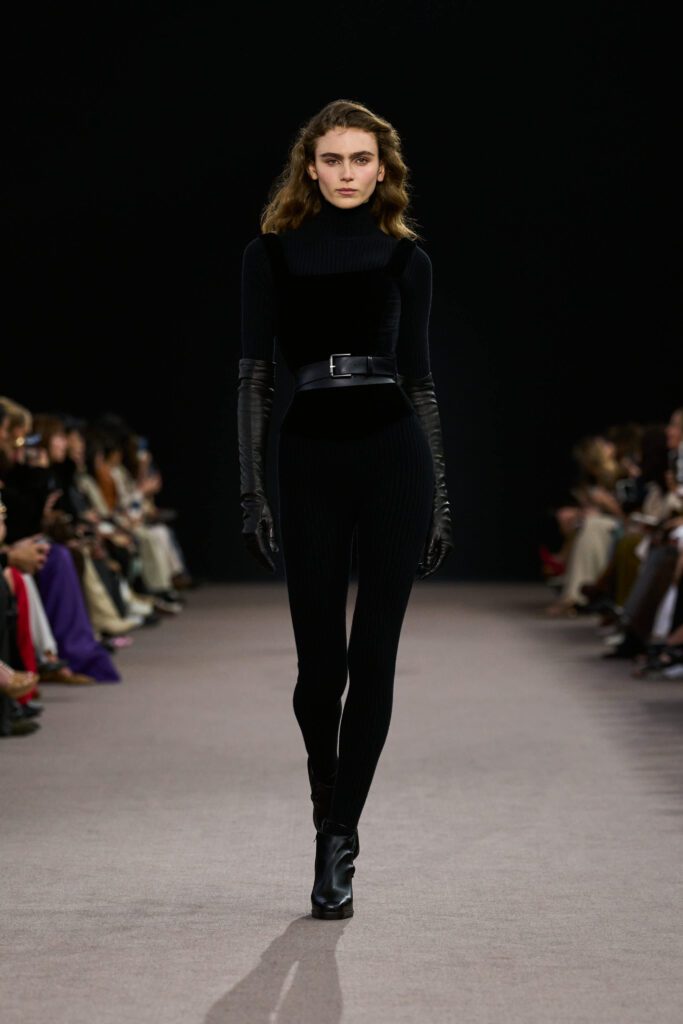
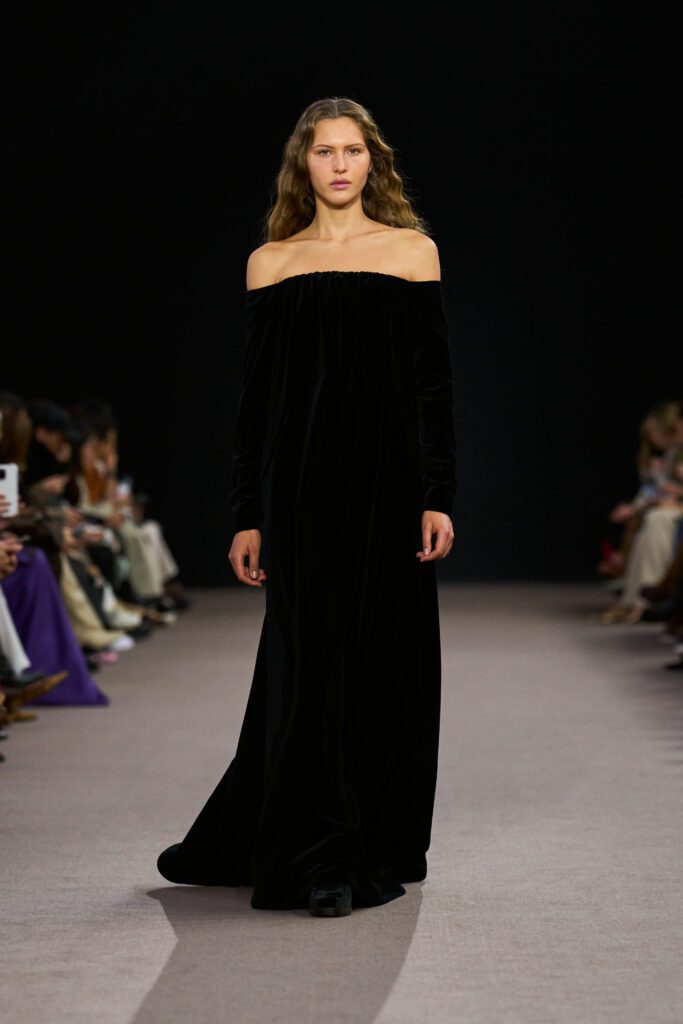
So what’s new for the season? A new addendum to the house’s palette, cascia, which sits in the gradations of light beiges—it offered a tasteful lightness to the outerwear. “After all these years we’ve been talking about the colour cascia, we realised that it doesn’t exist in any dictionary,” Griffiths opined. “It’s a totally made-up word that we use only at Max Mara, and we’ve applied for it to be copyrighted. So do not say cascia, or we will be chasing you through the courts!” he exclaimed, with sheer excitement.
All in all, these pieces suggest and Griffiths is ready to keep rising through the challenge of refining the house’s line, attacking it with a quiet evolution and poised ambition.
by Chidozie Obasi
